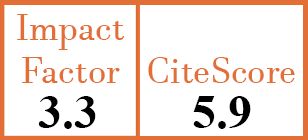Full Papers
Upadacitinib in psoriatic arthritis with prior TNF-inhibitor failure: a 56-week real-world study
U. Bakay1, T. Izci Duran2, O.S. Karstarli Bakay3
- Department of Rheumatology, Denizli State Hospital, Denizli, Turkey. ubakay280220@gmail.com
- Department of Rheumatology, Denizli State Hospital, Denizli, Turkey.
- Department of Dermatology, Pamukkale University Medical Faculty, Denizli, Turkey.
CER19292
Full Papers
PMID: 41231514 [PubMed]
Received: 07/09/2025
Accepted : 30/10/2025
In Press: 13/11/2025
Abstract
OBJECTIVES:
Evidence on the long-term real-world effectiveness and safety of upadacitinib in TNFi-refractory psoriatic arthritis (PsA) remains limited. Our aim was to evaluate the real-world effectiveness and safety of upadacitinib in PsA patients with prior TNF-inhibitor failure.
METHODS:
This retrospective study included 47 patients with PsA (mean age 46.7 ± 10.1 years, 59.6% female, mean disease duration 9.8 ± 7.4 years). Patients received upadacitinib 15 mg daily and were followed up to 56 weeks. Clinical activity (DAPSA, BASDAI, ASDAS-CRP), ACR responses, PASI, patient-reported outcomes, and adverse events were assessed at baseline, week 12, 24, and 56. Intention-to-treat (ITT) analysis was the primary approach.
RESULTS:
Axial involvement was present in 74.5% and enthesitis in 85.1%. At week 12, ITT ACR20/50/70 response rates were 63.8%, 55.3%, and 31.9%, respectively. By week 56, ITT responses were 61.7%, 59.6%, and 51.1%. Significant improvements were also observed in DAPSA, BASDAI, ASDAS-CRP, and PASI scores (all p<0.001), with resolution of enthesitis in most patients. Adverse events occurred in 23.4% of patients, with 10.6% leading to discontinuation. Safety outcomes were consistent with the established profile of upadacitinib, with no new safety signals identified.
CONCLUSIONS:
Upadacitinib demonstrated sustained efficacy across musculoskeletal and skin domains in PsA patients with prior inadequate response to TNF inhibitors, with a safety profile consistent with previous reports. These findings support its role as an effective treatment option in this difficult-to-treat population.


